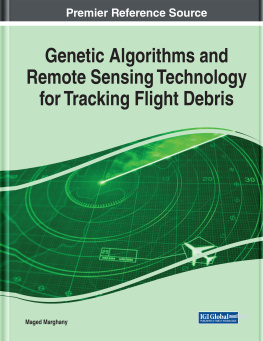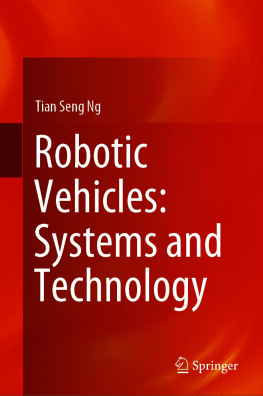ENGINEERING
ANALYSIS OF
FLIGHT VEHICLES
HOLT ASHLEY
DOVER PUBLICATIONS, INC
Mineola, New York
Copyright
Copyright 1974 by Holt Ashley.
All rights reserved.
Bibliographical Note
This Dover edition, first published in 1992 and reissued in 2012, is an unabridged, corrected republication of the work first published by the Addison-Wesley Publishing Company, Reading, Mass., 1974, in the Addison-Wesley Aerospace Series.
Library of Congress Cataloging-in-Publication Data
Ashley Holt.
Engineering analysis of flight vehicles / Holt Ashley.
p. cm
Includes bibliographical references and index.
e-ISBN-13: 978-0-486-16653-7
1. Aerodynamics. I. Title.
| TL570.A77 1992 |
| 629.132'3dc20 | 92-4464
CIP |
Manufactured in the United States by Courier Corporation
67213104
www.doverpublications.com
PREFACE
Alfred J. Lotka (1956) has said, The preface is that part of a book which is written last, placed first, and read least. When one sets out to produce a textbook which is also a pedagogic experiment, the preface provides his only opportunity to explain what he is up to. I hope, therefore, that the third part of Lotka's description is not predictive for the paragraphs which follow.
At the Stanford Department of Aeronautics and Astronautics I have been engaged for five years in evolving a course whose title coincides with this book's and whose first aim is to introduce entering graduate students to the applications of some important engineering sciences, especially as they affect the complex process of designing atmospheric flight vehicles. Most of these students come from backgrounds other than four-year aerospace programs. There are among them mechanical engineers, civil engineers, mathematicians, physicists, and representatives of a dozen other fields, but they all share what I consider the most important prerequisite for the course: admission as advanced degree candidates in the School of Engineering. Well-motivated seniors from our undergraduate aeronautical option also have no difficulty with the material. At the other end of a potential population distribution, a number of experienced aerospace engineers, who returned to Stanford for further study, have told me that they benefited from the review offered by this course.
As mentioned in the opening paragraphs of , people who first join the aeronautics and astronautics curriculum at the graduate level tend to be impatient with the traditional approach, wherein dynamics, aerodynamics, propulsion, structures, stability, control, and guidance are taught as separate disciplines before they are integrated into the process of flight-vehicle design. Now I would be the last to claim for myself the very precious qualities of the designer. As conceived of here, these are skills attained by only a few, and then usually after the better part of a lifetime of hard work in a place in which vehicle systems (not research and Ph.D.'s) are the principal product. What I do know is something of the analytical tools that enter the armamentarium of a design team. Experience has shown me that one way of describing them is through the vehicle's equations of motion as a unifying framework. In the process of examining the terms that appear in these equations and the manner in which a vehicle's capabilities are predicted, I find it natural to explore several of the most widely used tools and refer to many more.
The program of this book agrees approximately with the order in which the deal, respectively, with the aerodynamic theory of wings and bodies. Some will disagree with this program, but delaying the subject of flow over bodies to the point at which the treatment of boost and entry vehicles creates a special need for it seems to cause my students little inconvenience.
The propulsive terms are the topic of . Also included are some simple questions of trim, control, and static performance.
The remainder of the book focuses on the vital subject which I choose to call dynamic performance. As examples, analyses of boost trajectories, entry, and optimal trajectories make up the material of , respectively.
I have discovered that this totality is perhaps ten percent too large for a three-quarter academic year taught at my rather leisurely pace. Others may wish to pick and choose or to cover the entire text, for that is up to the individual instructor. I regret that my own practice to date has been to short-change the discussion of entry and nearly to omit the fascinating subject of optimization. Perhaps the availability of the printed word will help me to reform.
I should also mention that the manner in which our graduate program is arranged causes some students to elect only the first quarter. By covering , with perhaps some brief reference to propulsion, I find myself offering them a fairly self-contained course on applied aerodynamics.
One plea must be made to experts in the particular disciplines which the book tries to synthesize. I beg their tolerance of the omissions and simplifications that are forced on me as I strive for succinctness. I ask these people to judge the book on what it is trying to achieve and to question only whether no harm has been done to the essence of their specialties. Although not as fully informed as they, I am more knowledgeable about their subjects than may appear here. With malice aforethought, some chapters contain mere hints and allusions to the further depth to which the student may wish to explore a given issue. I also attempt to furnish a selective guide to readily available literature, in the hope that readers may be stimulated to follow leads, to flesh out specific topics by the familiar process of searching libraries and tracing back references. When it is impossible to be comprehensive, one is wise to seek all the help he can get.
There is one sincere regret. It is that I have not been able to devote as much attention as they deserve to two indispensible disciplines: structural analysis, and the complex of tools which my M.I.T. friends refer to as guidance, automatic control, communication, and navigation. Some flavor of these is introduced in problems and qualitative discussions.
If ever a course employed problem assignments as an essential complement to lectures, it is the one behind this book. Among the suggested homework at the ends of , a few questions are of the traditional variety; that is, the student will know when he has reached the answer and can neatly box it for submission. The majority of the problems, however, are open-ended. Their aim is to encourage the expansion of textual material, the study of a new idea, or even, in some cases, the exploration of a new area. I find that this scheme is so novel that it must be carefully explained, lest students become either angry with me for overloading them or so captivated by a particular question that they neglect other work. Although a teacher can hardly be disappointed by the latter reaction, he is well advised to mention the problem philosophy in advance and even to suggest rough time limits on certain assignments. The teacher should also realize that what I offer here is only typical and that, if he approves the open-ended format, there are unlimited opportunities for building additional problems around his own interests.
Most graduate programs have ready access these days to computational. facilities. It is largely through the homework that I attempt to bring in both digital and analog computers. This is done in such a way that it should be easily adaptable to the machinery available at the instructor's institution.
The reference list at the end of the book is not intended to be overwhelming. Rather I have followed two general guidelines in choosing citations: that they should be on the shelves of all aerospace libraries and most comprehensive engineering libraries; and that they should have proved useful and enjoyable in my own studies. There are only a few exceptions to these rules. At the same time, another teacher may wish to make quite a different selection. I have intentionally concentrated on American literature, notably on the output of two or three very productive agencies, such as the National Aeronautics and Space Administration (NASA), and its predecessor, the National Advisory Committee for Aeronautics (NACA).















